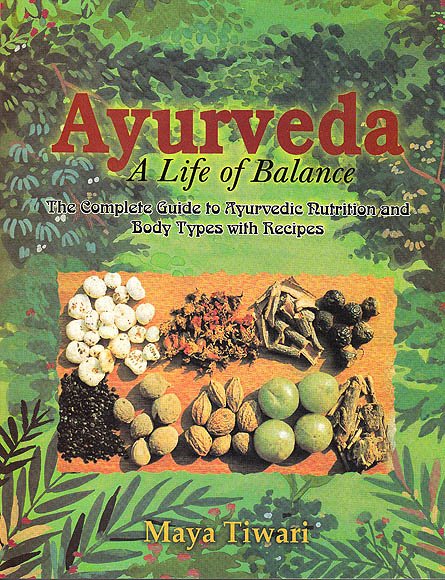Indian Medicinal Plants
by Kanhoba Ranchoddas Kirtikar | 1918
A comprehensive work on Indian Botany including plant synonyms in various languages, habitat description and uses in traditional medicine, such as Ayurveda....
17. Aconitum Soongaricum, Stapf.
The medicinal plant Aconitum soongaricum is a member of the Ranunculaceae (buttercup) family. This page includes its habitat, botanical descption, medicinal uses (eg., Ayurveda), chemical constituents and history of use in modern and ancient India.
Stapf writes:—
“Of all the Indian species of Aconitum which I have seen, this comes nearest to the A. Napellu s of Europe; and if that species is taken in a broad sense, A. Soongaricum might perhaps be included in it as a variety, the principal differences being in the small size and shape of the tubers and the peculiar long-beaked helmet. The long, linear, usually entire laciniae of the leaves also are unusual in A. Napellus; still they occur occasionally. The fruits and seeds may possibly, when known, add other distinctive characters.” (1. c. p., 142.)
Vernacular name:—unknown,
Habitat:—Alpine region of the mountain ranges of Gilgit and Turkestan.
Botanical description:—Roots: Biennial, paired; tuberous: daughter-tuber conic, slender, 2-2.5 cm. long 0.7 cm. thick, with very few root-fibres, brown externally, fracture horny, brown, taste faintly sweetish bitter, followed by a very slight tingling sensation, cambium continuous, forming a scarcely sinuous ring in cross-section; mother-tuber similar, more or less shrunk.
Innovation-bud: conic, about 5 mm. long; scales scarious, soon decaying or sprouting.
Stem: erect, simple, moderately robust, quite glabrous, rarely slightly pubescent in the upper part, up to 7 dm. high.
Leaves: scattered, lowest usually decayed at the time of flowering, intermediate remote, upper more approximate, glabrous; petioles more or less widened at the base; lower up to 12 cm. long, upper 1-2 cm. long; blades more or less cordate-orbicular or reniform in outline, with a wide or narrow sinus, 2—3 cm. deep; 5—9 cm. from the sinus to the tip, 8—12 cm, across, 5-partite to the very base or in the outer incisions almost to the base; inner 3 divisions similar, rhomboid in outline from a narrow cuneate base, 2.5—3.5 cm. wide, 3-lobed to or beyond the middle or pinnate-laciniate, lobes or laciniae broad-linear, obtuse to shortly acute 1.5-3 cm. long, 3-5 mm. broad, entire or the larger with 1-2 coarse teeth or linear lobules, outer divisions 2-fid beyond the middle, inner segment 2-3-lobed, outer often entire, linear.
Inflorescence: an erect dense or somewhat loose, terminal raceme 6-18 cm. long, or with additional branches from the upper leaves, glabrous or sparingly softly pubescent; lower bracts foliaceous, 3-partite, with mostly entire long linear segments, considerably exceeding the pedicels, intermediate linear, entire, up to 2-5 cm. long, upper filiform, short; pedicels slender, erect or often adpressed to the rhachis, lower 1.5—2.5 cm. long; bracteoles linear, above the middle of the pedicel, sometimes close to the flower.
Sepals: blue, pubescent, ciliate; uppermost helmetshaped; helmet clawed, equally curved on the back and in front (seen in profile), descending into a long slender beak, lateral margin deeply concave, 16-18 mm. high, 12-15 mm. from the tip to the base, 5-6 mm. wide at the top; lateral sepals oblique, obovate-orbicular, shortly clawed 13-17 mm. long, not contiguous with the helmet; lower deflexed, sub-horizontal, elliptic to oblong, obtuse or sub-obtuse, 10-15 mm. long.
Nectaries: glabrous; claw slender up to 12 mm. long; hood erect, 5 mm. long, top gibbous at the back; lip oblong-ovate, crenulate, as long as the hood.
Filaments: glabrous or sparingly hairy in the upper part, 7-8 mm. long, winged below, wings gradually or abruptly contracted.
Carpels: 3 lanceolate-oblong, gradually passing into the style, somewhat diverging, glabrous or almost so.
Mature follicles: and seeds unknown.
Young follicle: distinctly diverging, inserted on the enlarging torus.
Medicinal uses:—“The root does not appear to find its way to the bazars of India. This species has not as yet been chemically investigated, and it is just possible that it may be found to contain aconitine.”—(Watt.).
